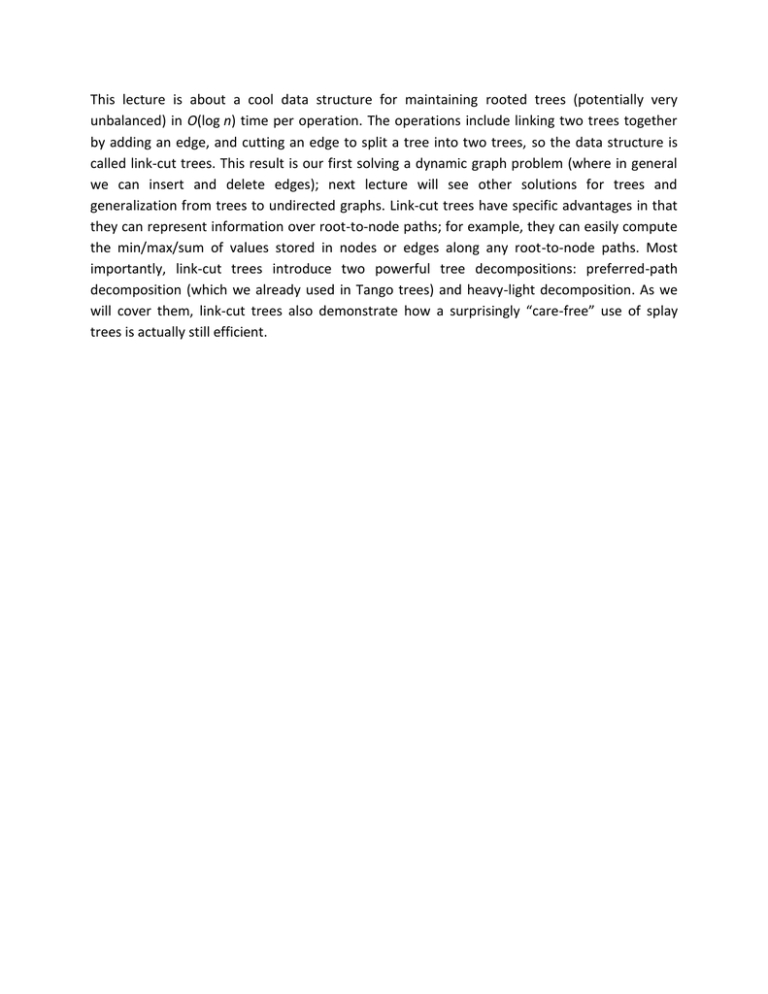Document 13392071
advertisement

This lecture is about a cool data structure for maintaining rooted trees (potentially very unbalanced) in O(log n) time per operation. The operations include linking two trees together by adding an edge, and cutting an edge to split a tree into two trees, so the data structure is called link-cut trees. This result is our first solving a dynamic graph problem (where in general we can insert and delete edges); next lecture will see other solutions for trees and generalization from trees to undirected graphs. Link-cut trees have specific advantages in that they can represent information over root-to-node paths; for example, they can easily compute the min/max/sum of values stored in nodes or edges along any root-to-node paths. Most importantly, link-cut trees introduce two powerful tree decompositions: preferred-path decomposition (which we already used in Tango trees) and heavy-light decomposition. As we will cover them, link-cut trees also demonstrate how a surprisingly “care-free” use of splay trees is actually still efficient. MIT OpenCourseWare http://ocw.mit.edu 6.851 Advanced Data Structures Spring 2012 For information about citing these materials or our Terms of Use, visit: http://ocw.mit.edu/terms.





